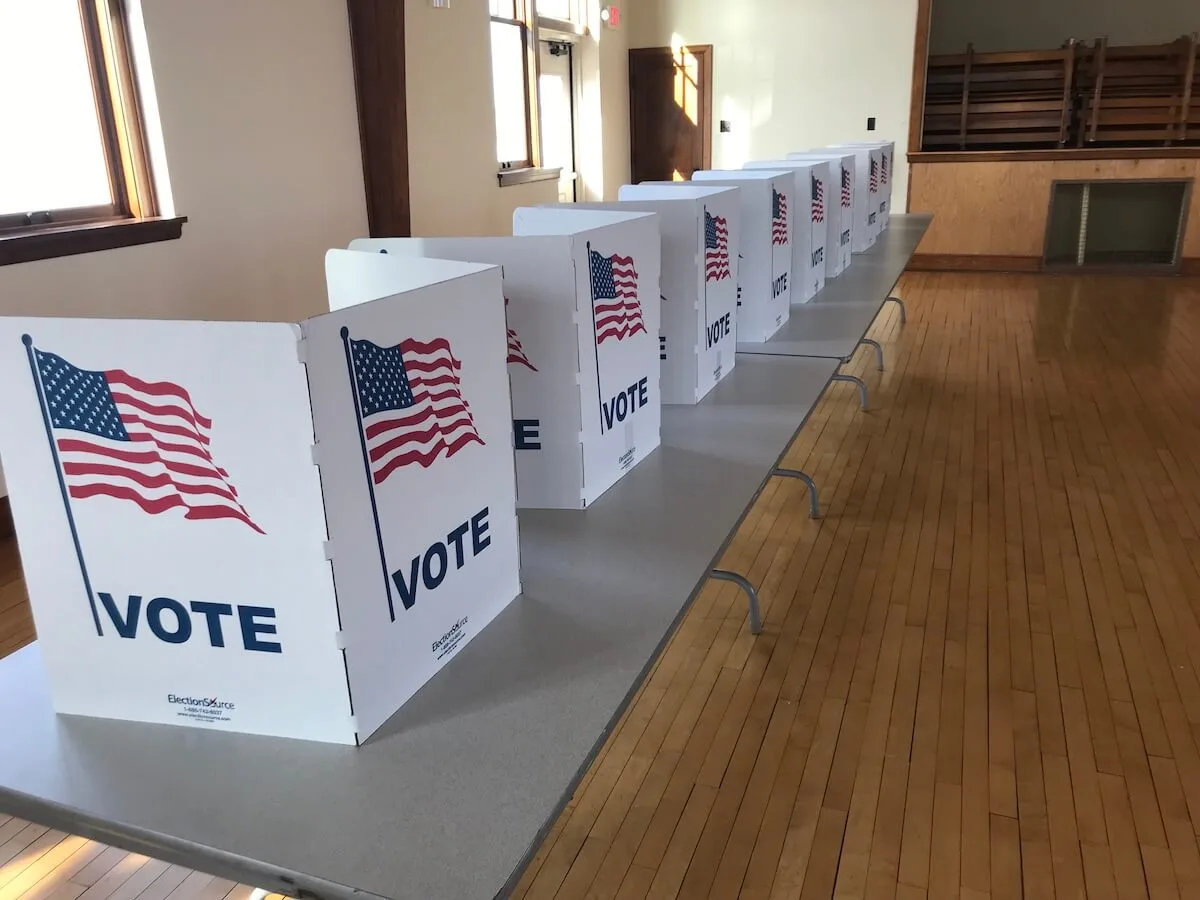
#image_title
#image_title
[Editor’s Note: This article has been corrected to remove the need for a Wisconsin driver’s license from the eligibility section.]
This page covers the basics about becoming a voter, checking your registration status, having the right identification, and knowing if you’re ready to vote on Nov. 8.
To Be a Voter, You Need to Be a Registered Voter
It’s always a good first step—and an easy one—to check your current voting registration status as recorded by the Wisconsin Elections Commission (WEC), just in case things have changed or you’ve forgotten something. Go to the commission’s website for voters: MyVote.WI.gov.
A search box with just three blanks is where you’ll start: First Name, Last Name, Birthdate.
If a matching record is found for you, review it for accuracy. There is a button to update your name or address.
If there is no matching record, the website will say, “You Are Not Registered.” There is a button to start the registration process.
You may be asking if you can look up anyone’s registration status based on name and birthdate—and the answer is: “Yes, but.” As in: Yes, but trying to do anything about registering or voting in someone else’s name can get you a prison sentence of up to 3-1/2 years. (Plus, checking if someone is a registered voter isn’t a big deal. Lists of all registered Wisconsin voters are readily available for purchase.)
So, now that you’ve checked your own registration status, let’s see if you’re eligible to vote.
Voting Is for (Almost) Everyone
Here are the questions that determine your eligibility to vote:
- Are you a U.S. citizen?
- Will you be at least 18 years old at the time of the next election?
- Will you have resided at your current address for at least 28 days prior to the upcoming election, with no present intent to move?
- Are you currently serving a court sentence for a felony criminal conviction, including probation, parole, or extended supervision for a felony conviction?
- Are you otherwise disqualified from voting? (Usually a rare instance of some other court determination that bars you from voting.)
If you’re eligible to vote, the next step is to register. A current Wisconsin driver’s license or ID card is helpful, but not mandatory for registering. If your card is expired, you can still provide the number along with the last four digits of your Social Security number. If you have none of these documents, you will be able to indicate that fact as you register.
There Are Four Ways to Register to Vote
The Wisconsin Elections Commission website has details on the four ways to register.
Online – Voting registration can be done at the MyVote website for those who have a valid Wisconsin Driver License or State of Wisconsin ID card issued by the Wisconsin Department of Motor Vehicles (DMV). This option expires at 11:59 p.m. on Wednesday, Oct. 19 (20 days prior to the election). A state-issued driver’s license or other ID card is not required to register, but it is necessary if you want to register using the online option.
Mail – The option to mail a completed application form to your local clerk also expires 20 days prior to the election. Applicants can use any of the allowed forms of proof of residence except a residential lease (covered in the next section).
Clerk’s Office – Application forms can be filled out in person at your municipal clerk’s office up until the Friday before the election at 5 p.m. or close of business, whichever is later.
Polling Place – Wisconsin is one of the states that allows registration on Election Day right at your local polling station, provided you have all of the necessary information.
To Become a Registered Voter, You Need Proof of Residency
Voting is all about the elected officials who represent you where you live—because you don’t just live at an address. You live in a school district, a county, a congressional district, two legislative districts (Assembly and Senate), a municipality, a state, and several other units of government. So to be a registered voter and decide which candidates will represent your place, you have to prove you live at your place.
There are many ways to supply proof of your address. There is a page on the WEC website that lists them all. The most common ones are a real estate (property) tax bill; a utility bill (electric, gas, phone) from at least 90 days prior to the election; a bank or credit card statement; a paycheck or pay stub; or a check or other document issued to you by a unit of government.
People without a permanent address can also register to vote by providing a note on letterhead from a social service agency (public or private) that identifies the homeless voter and describes the person’s residence for voting purposes.
There are exceptions to residency requirements for military and permanent overseas voters.
Now You’re Registered—But to Vote, You Need to Bring Proof of Identification
Voter fraud is so rare, such a statistically insignificant sliver of the total electorate, and so nearly impossible to execute on a scale large enough to sway an entire election that the aggressive push by Republicans to implement Voter ID laws is seen by many less as an anti-fraud safeguard and more as a hurdle designed to suppress votes by populations less likely to have government-issued forms of identification.
But, it’s what’s on the books right now, so let’s review the many ways you ensure you have an ID on election day.
There are identification options besides the usual state-issued Wisconsin drivers license. The state can provide an identification card not related to driving. A passport or a military ID card works, as does an ID card issued by a federally recognized Native American tribal nation, and many student ID cards from accredited universities and colleges.
Drivers licenses can be used for identification even if driving privileges are revoked or suspended. And student ID cards can still be used even if expired in certain situations. Check the WEC website for details and even more forms of acceptable identification.
An ID card does not have to list your correct, current address. You register to vote with proof of residency. You cast a vote with identification.
It’s okay if you don’t look exactly like your ID photo anymore because of weight changes, hair color, facial hair, etc., but it does have to be a reasonable resemblance.
Same goes for your name. Rich or Richard, Bob or Robert, Susie or Susan, you’re all good.
To get a state-issued identification card at your local DMV office, follow the instructions on their website to bring a birth certificate (or other proof of your name and birthdate), proof of identity such as a Social Security, Medicaid or Medicare card, proof of residency (like a utility bill), proof of US citizenship, and a Social Security number. Even if you don’t have those items, you can bring what you have to the DMV, fill out a couple of forms, and have an ID issued to you for voting.
The state Dept. of Transportation has a website to help you find your nearest DMV office and its hours of operation.
For more details and other questions, contact the Wisconsin Voter ID Hotline at 844-588-1069.
Politics

Biden administration bans noncompete clauses for workers
The Federal Trade Commission (FTC) voted on Tuesday to ban noncompete agreements—those pesky clauses that employers often force their workers to...

Opinion: Trump, GOP fail January 6 truth test
In this op-ed, Milwaukee resident Terry Hansen reflects on the events that took place on January 6, the response from Trump and other GOP members,...
Local News

Readers Poll: Top Bowling Alleys in Wisconsin
Looking for the best bowling in Wisconsin? Look no further! Our readers have spoken in our recent poll, and we have the inside scoop on the top...

8 Wisconsin restaurants Top Chef judges are raving about
Top Chef’s 21st season is all about Wisconsin, and on-screen, it’s already apparent that the judges feel right at home here. But, while filming in...





